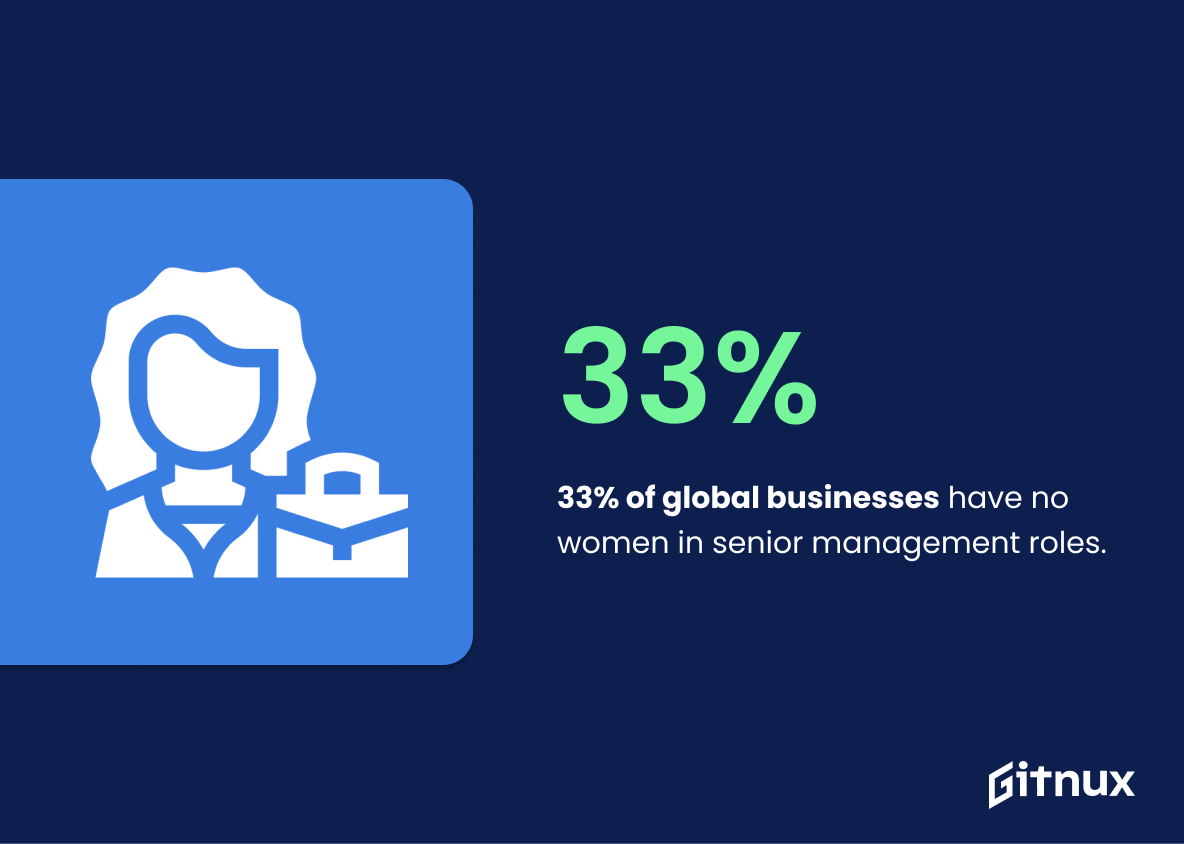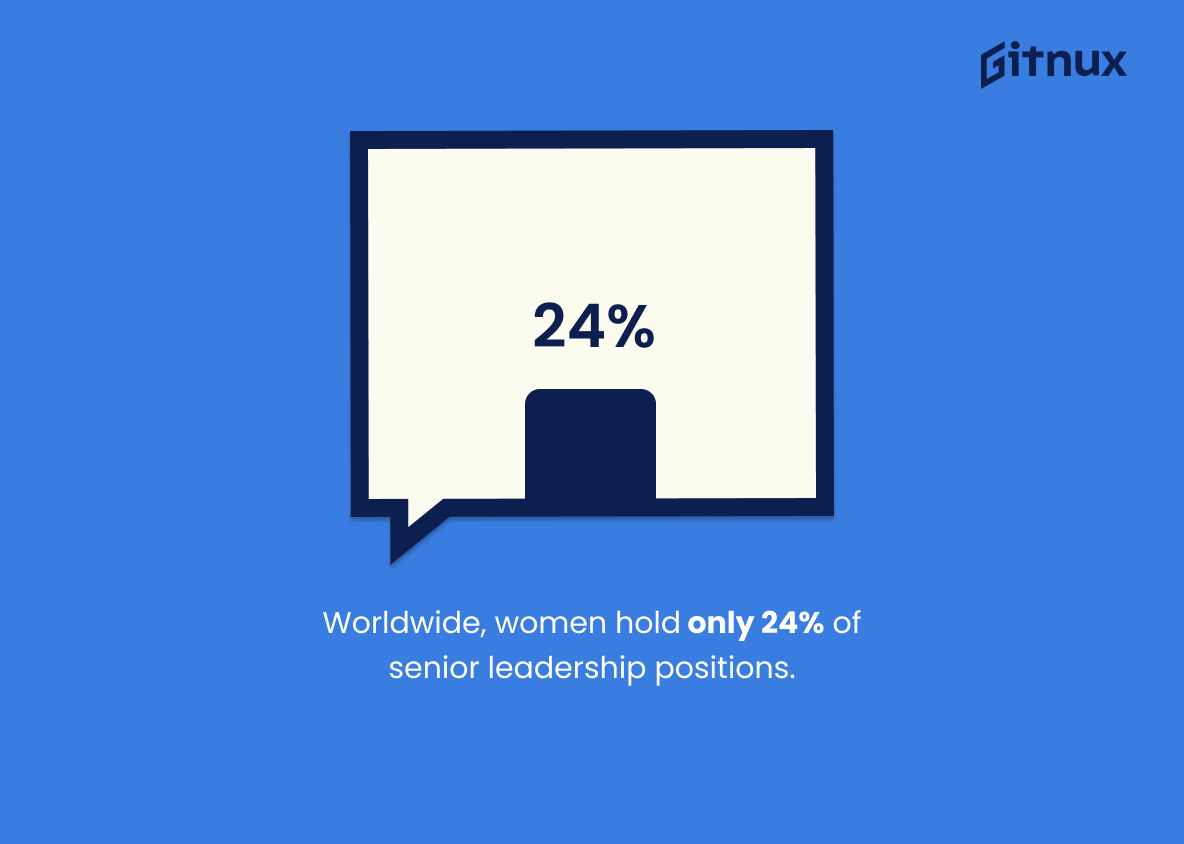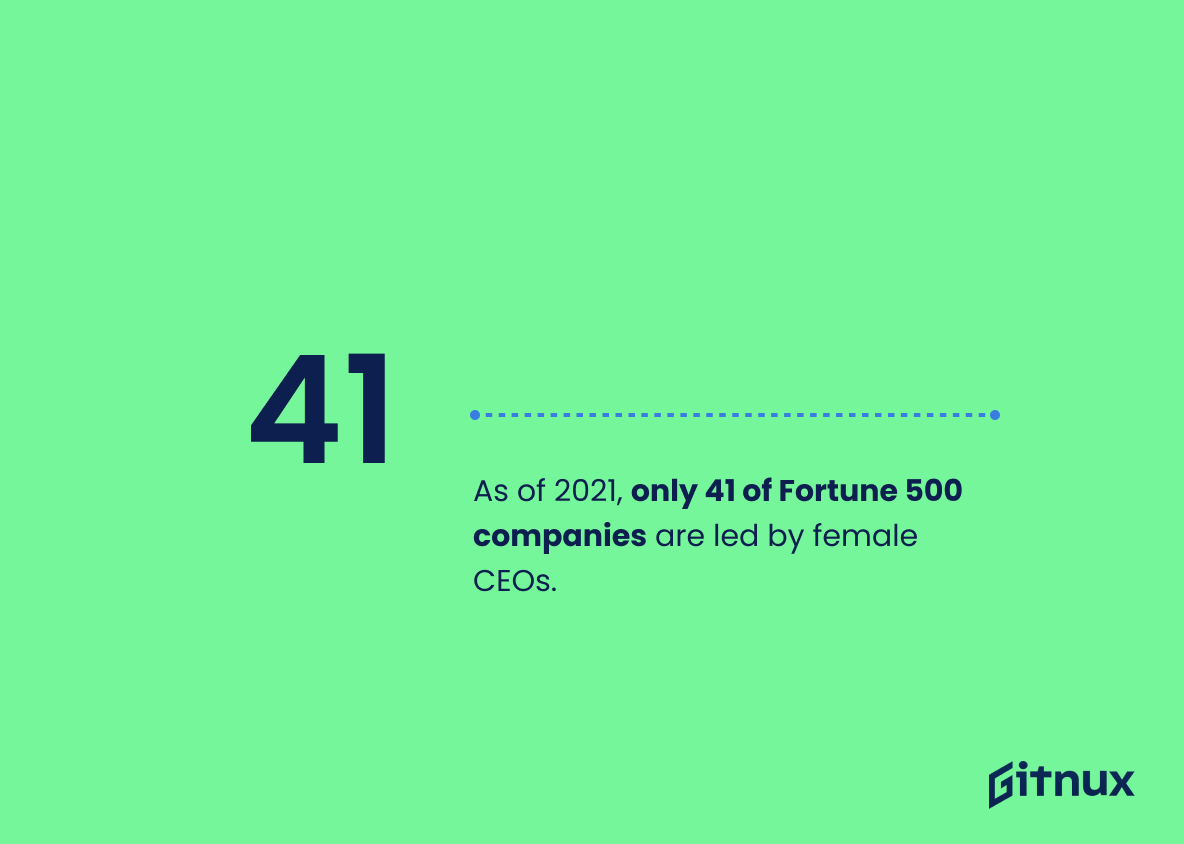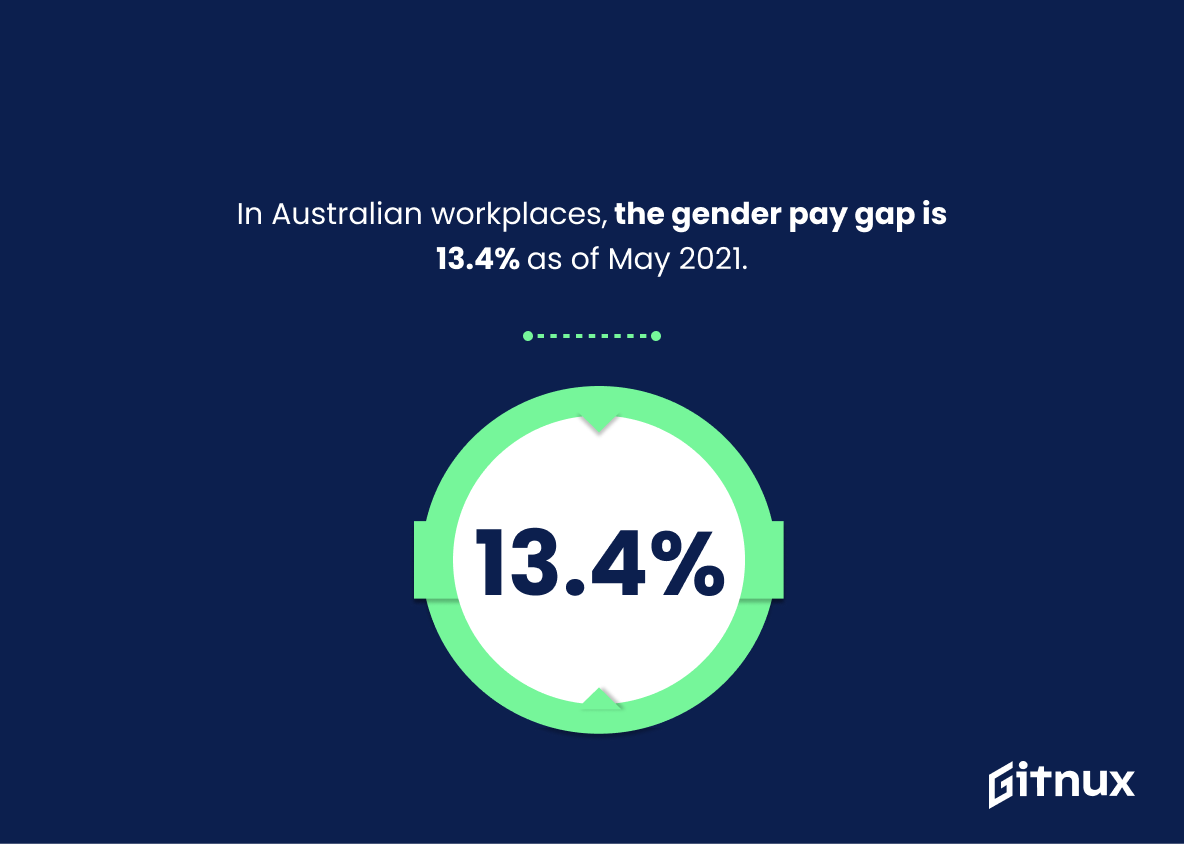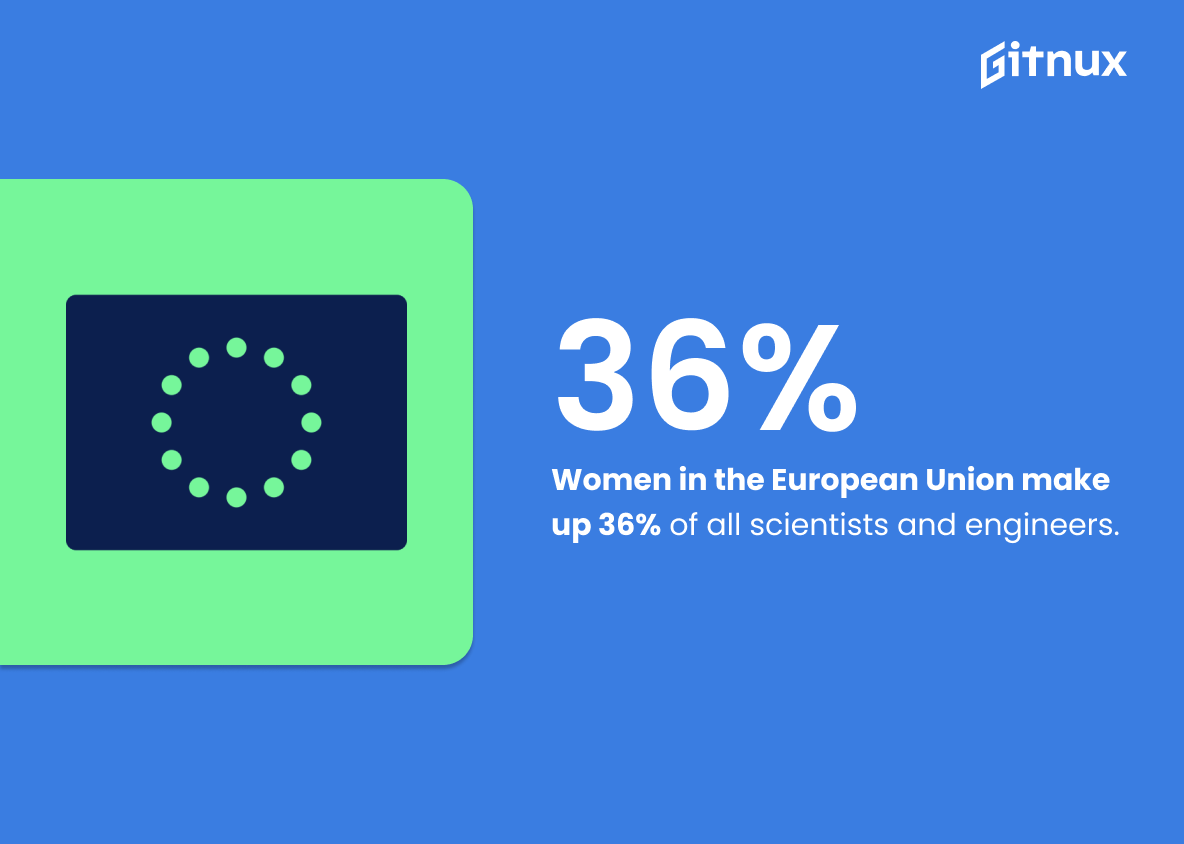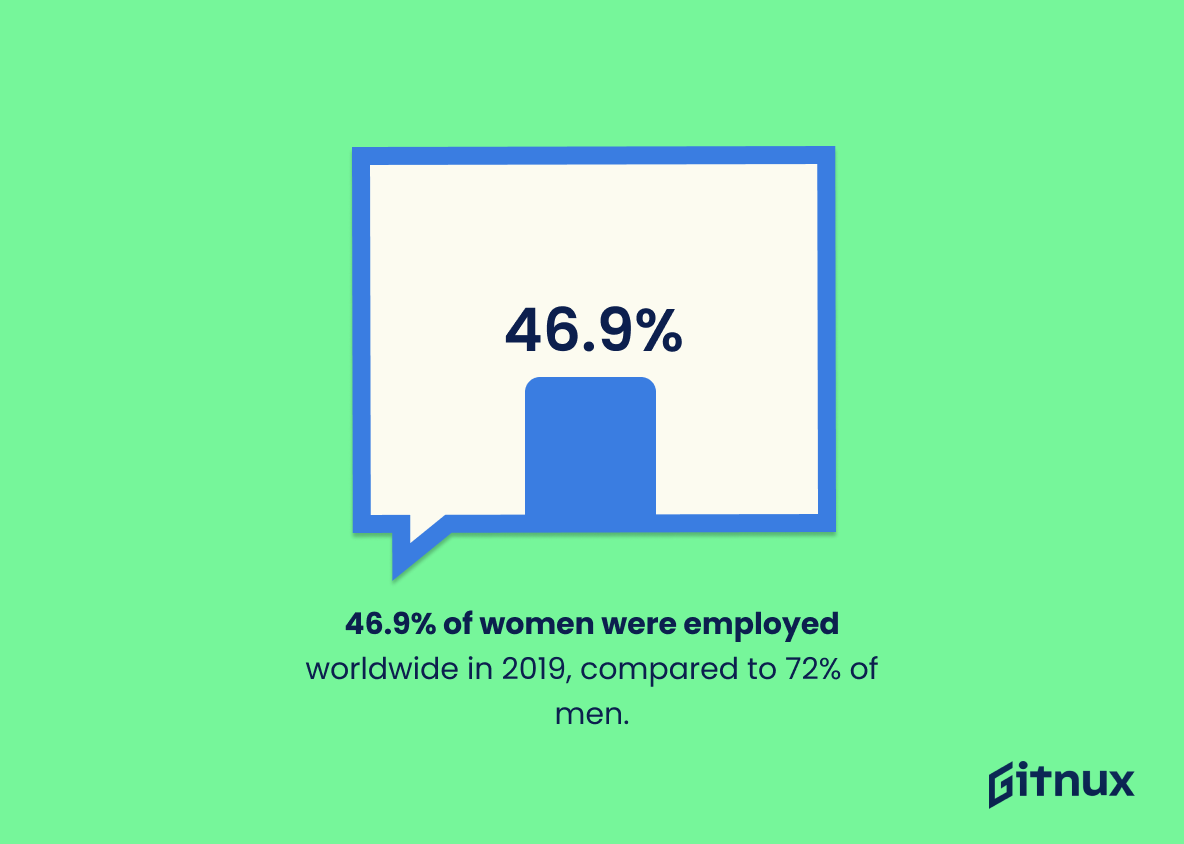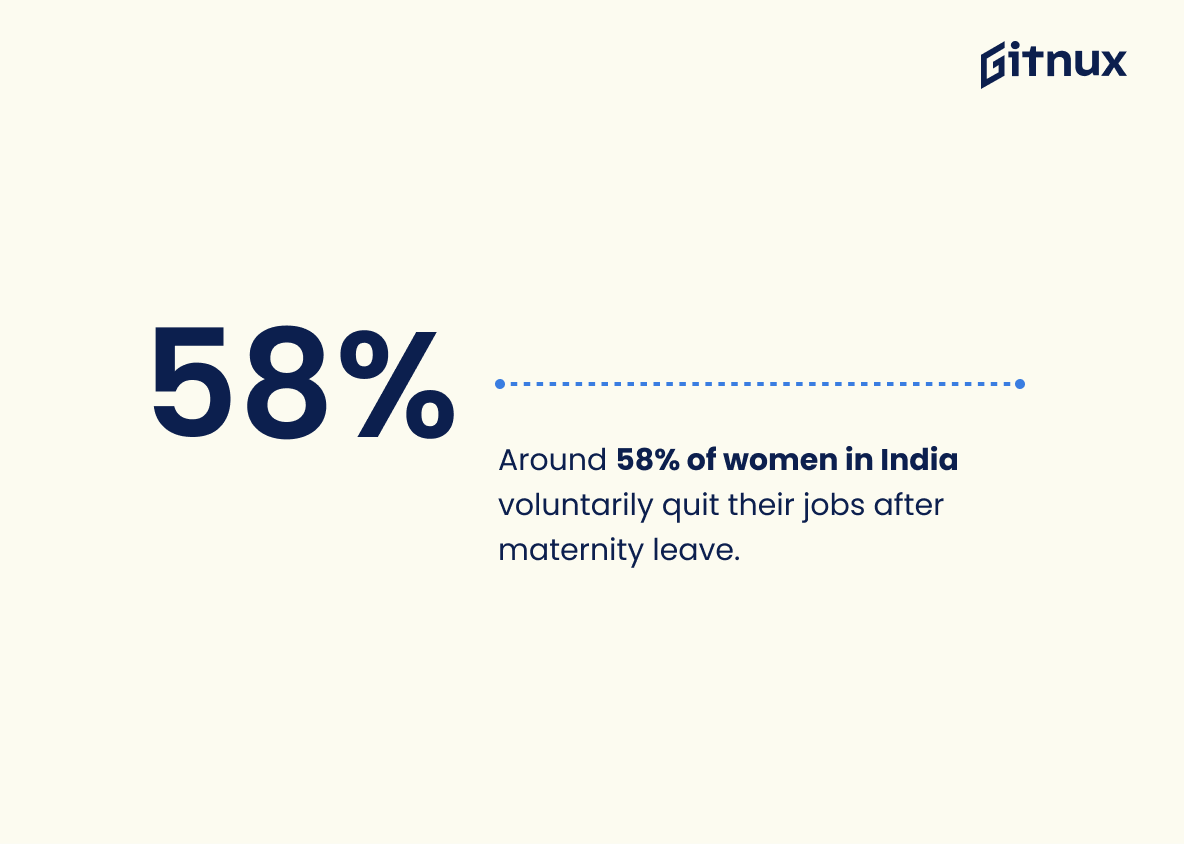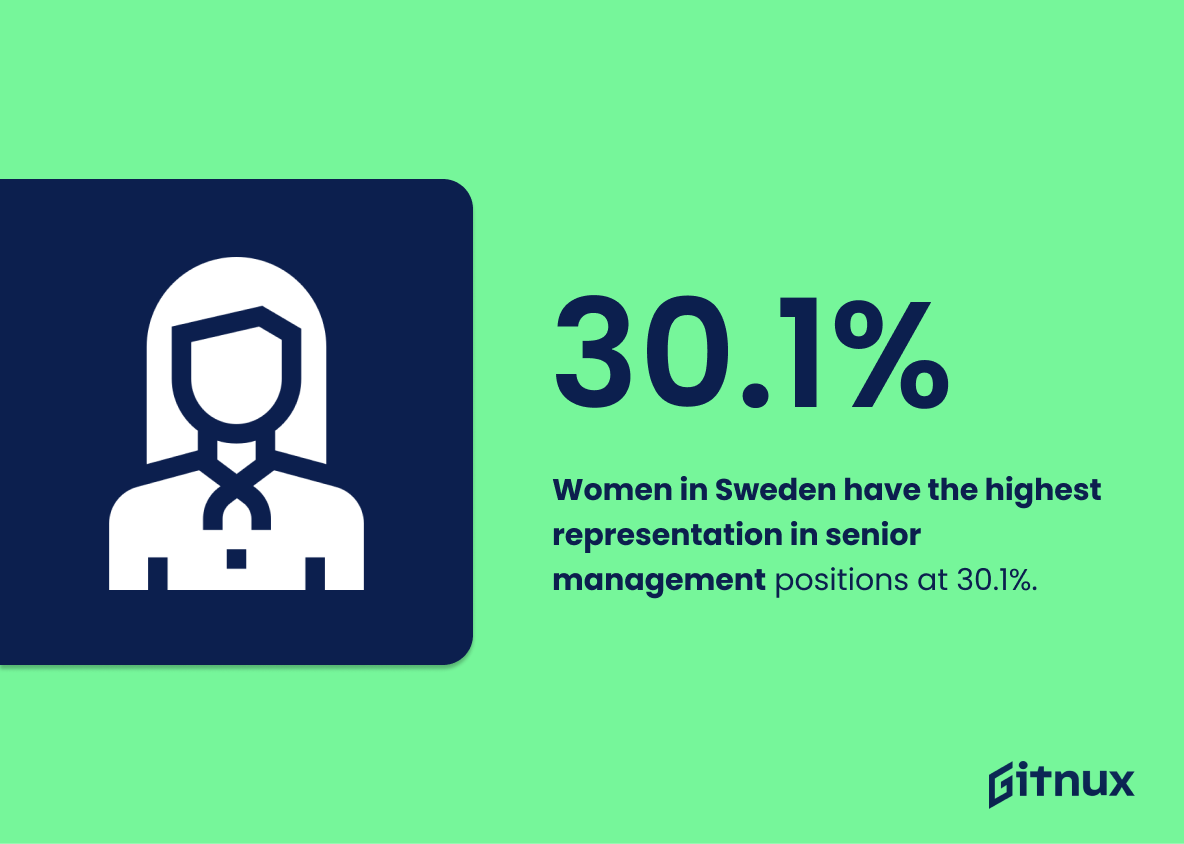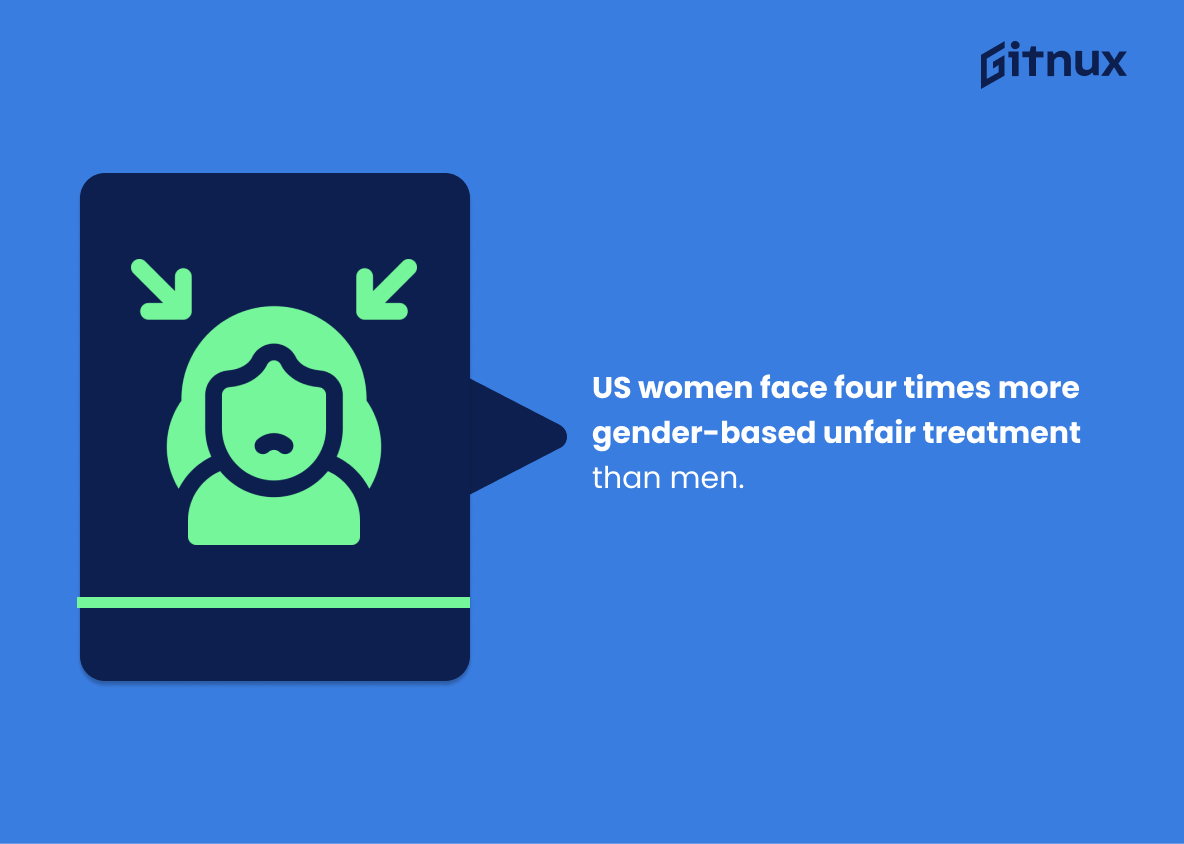Gender inequality in the workplace is a pervasive issue that has been present for decades. Despite progress being made, statistics show that women are still facing significant disparities when it comes to wages and leadership roles. According to data from the Bureau of Labor Statistics, women earn just 80 cents for every dollar earned by men in 2020. Additionally, only 26% of leadership roles were held by women in the US during this same year. The situation is even worse on a global scale; 33% of businesses have no female representation at all among their senior management positions while worldwide only 24% of these posts are filled by females.
The gender pay gap also remains an ongoing problem with mothers earning 75 cents for every dollar paid to fathers according to StatusofWomenData’s report from 2020 and 15.5%, 13.4%, 3%, 25%, 41/500 Fortune 500 companies led by female CEOs respectively as reported in 2021 UK ONS Gender Pay Gap Report , WGEA May 2021 Australian Workplace Gender Equality Agency Data , Computer Economics 2018 Research Study & Fortune Magazine June 2nd 2021 article . Even after controlling various factors such as experience or job level there’s still disparity between genders especially within tech fields where male software developers make 3 percent more than their female counterparts according to Glassdoor 2016 research study . Women hold 36 % (EU) & 46 % (worldwide) employment rate compared 72 % males which further highlights need towards bridging gender gaps across industries globally . In Canada full-time working woman earns 25 percent less than man whereas 42 percent British working ladies experienced discrimination due lack gender equality policies followed 30 U S labor force feeling similar way about career advancement opportunities available them per PewResearch Center survey conducted February 5th 2020 & October 18th 2017 respectively . Lastly Swedish workplaces lead pack having highest percentage i e 30 1 representing top tier managerial positions amongst European countries per Eurofound EU interactive database published 7th Feburary 2020
This statistic is a stark reminder of the gender inequality that still exists in the workplace. It highlights the fact that women are still not receiving the same pay as men for the same work, and that there is still a long way to go before true gender equality is achieved. This statistic is a powerful indicator of the need for change in the workplace, and serves as a call to action for employers to take steps to ensure that all employees are treated fairly and equally.
Women in the US held only 26% of leadership roles in 2020.
This statistic is a stark reminder of the gender inequality that persists in the workplace. It highlights the fact that women are still significantly underrepresented in leadership roles, despite making up nearly half of the US workforce. This statistic is a call to action for employers to take steps to ensure that women are given equal opportunities to advance in their careers.
Gender Inequality Workplace Statistics Overview
33% of global businesses have no women in senior management roles.
This statistic is a stark reminder of the gender inequality that persists in the workplace. It highlights the fact that women are still not being given the same opportunities as men to take on senior management roles, and that there is still a long way to go before true gender equality is achieved. This statistic is a call to action for businesses to take steps to ensure that women are given the same opportunities as men to reach the highest levels of management.
Worldwide, women hold only 24% of senior leadership positions.
This statistic is a stark reminder of the gender inequality that persists in the workplace. It highlights the fact that women are still significantly underrepresented in senior leadership positions, despite making up half of the global workforce. This statistic serves as a call to action for organizations to take steps to ensure that women are given equal opportunities to advance in their careers.
As of 2021, only 41 of Fortune 500 companies are led by female CEOs.
This statistic serves as a stark reminder of the gender inequality that persists in the workplace. It highlights the fact that despite the progress made in recent years, women are still vastly underrepresented in leadership positions. This is indicative of a larger problem in which women are not given the same opportunities as their male counterparts, and it is a problem that needs to be addressed.
In 2019, the gender pay gap for full-time employees stood at 15.5% in the UK.
This statistic is a stark reminder of the gender inequality that still exists in the workplace. It highlights the fact that, despite progress being made, there is still a long way to go before women and men are paid equally for the same work. This statistic serves as a call to action for employers to take steps to close the gender pay gap and ensure that all employees are treated fairly and equitably.
In Australian workplaces, the gender pay gap is 13.4% as of May 2021.
This statistic is a stark reminder of the gender inequality that still exists in Australian workplaces. It highlights the fact that, despite progress being made, there is still a long way to go before women and men are paid equally for the same work. This statistic serves as a call to action for employers to take steps to close the gender pay gap and ensure that all employees are treated fairly and equitably.
Women in the European Union make up 36% of all scientists and engineers.
This statistic is a powerful reminder of the gender inequality that still exists in the workplace. Despite making up 36% of all scientists and engineers in the European Union, women are still underrepresented in these fields. This statistic highlights the need for more initiatives to be taken to ensure that women are given equal opportunities to pursue careers in science and engineering.
46.9% of women were employed worldwide in 2019, compared to 72% of men.
This statistic serves as a stark reminder of the gender inequality that persists in the workplace. It highlights the fact that women are still significantly underrepresented in the workforce, with only 46.9% of women employed worldwide in 2019, compared to 72% of men. This disparity is indicative of the systemic barriers that women face in the workplace, and serves as a call to action to address the gender gap.
Around 58% of women in India voluntarily quit their jobs after maternity leave.
This statistic is a stark reminder of the gender inequality that persists in the workplace. It highlights the fact that women in India are still facing discrimination and lack of support when it comes to balancing their work and family life. This statistic is a call to action for employers to create more equitable and supportive environments for their female employees, so that they can continue to pursue their careers without having to make the difficult decision to quit.
Only 29% of women have access to senior roles in the finance sector.
This statistic is a stark reminder of the gender inequality that still exists in the finance sector. It highlights the fact that women are still being denied access to senior roles, despite their qualifications and experience. This is indicative of a wider problem in the workplace, where women are often overlooked for promotions and leadership positions. It is essential that steps are taken to address this issue and ensure that women are given the same opportunities as their male counterparts.
In the U.S., childcare issues cause 33% of female employees to voluntarily leave their jobs.
This statistic is a stark reminder of the gender inequality that persists in the workplace. It highlights the fact that female employees are disproportionately affected by childcare issues, leading to a third of them having to leave their jobs. This is a concerning figure that speaks to the need for employers to provide better support for working mothers.
Women in Sweden have the highest representation in senior management positions at 30.1%.
This statistic is a shining example of how far Sweden has come in terms of gender equality in the workplace. It shows that women are being given the same opportunities as men to reach the highest levels of management, and that the country is making strides towards a more equitable future. This statistic is a testament to the progress that can be made when gender equality is taken seriously and given the attention it deserves.
42% of women in the UK have reported experiencing gender-based discrimination in the workplace.
This statistic is a stark reminder of the prevalence of gender-based discrimination in the workplace. It highlights the fact that, despite progress in recent years, there is still a long way to go in terms of achieving gender equality in the workplace. This statistic serves as a call to action for employers, policy makers, and individuals to take steps to ensure that all employees are treated fairly and equally, regardless of gender.
30% of women in the U.S. labor force feel that their gender has been a barrier to career advancement.
This statistic is a stark reminder of the gender inequality that still exists in the workplace. It highlights the fact that despite the progress made in recent years, women are still facing discrimination and unequal opportunities when it comes to career advancement. This statistic serves as a call to action for employers to take steps to ensure that all employees, regardless of gender, have equal access to career advancement opportunities.
Female workers in the U.S. are nearly four times more likely than men to say they have been treated unfairly due to their gender.
This statistic is a stark reminder of the gender inequality that persists in the workplace. It highlights the fact that female workers in the U.S. are still facing discrimination and unfair treatment due to their gender, despite the progress that has been made in recent years. This statistic is a powerful reminder that there is still much work to be done in order to ensure that all workers are treated equally and fairly, regardless of their gender.
Conclusion
The statistics presented in this blog post demonstrate the pervasive gender inequality that exists in workplaces around the world. Women are paid less than men, hold fewer leadership roles and senior management positions, and face discrimination due to their gender. This is a problem that needs to be addressed urgently if we want to create an equitable workplace environment for all genders. Companies should take steps such as implementing equal pay policies, providing flexible working arrangements for parents or caregivers, and creating more opportunities for women in leadership roles so they can reach their full potential without facing any barriers based on their gender identity.
References
0. – https://www.catalyst.org
1. – https://www.data.worldbank.org
2. – https://www.ons.gov.uk
3. – https://www.bls.gov
4. – https://www.proptiger.com
5. – https://www.ilo.org
6. – https://www.grantthornton.global
7. – https://www.pewresearch.org
8. – https://www.sp2.upenn.edu
9. – https://www.eurofound.europa.eu
10. – https://www.fortune.com
11. – https://www.wgea.gov.au
12. – https://www.uk.finance.yahoo.com
13. – https://www.oliverwyman.com
14. – https://www.ec.europa.eu
